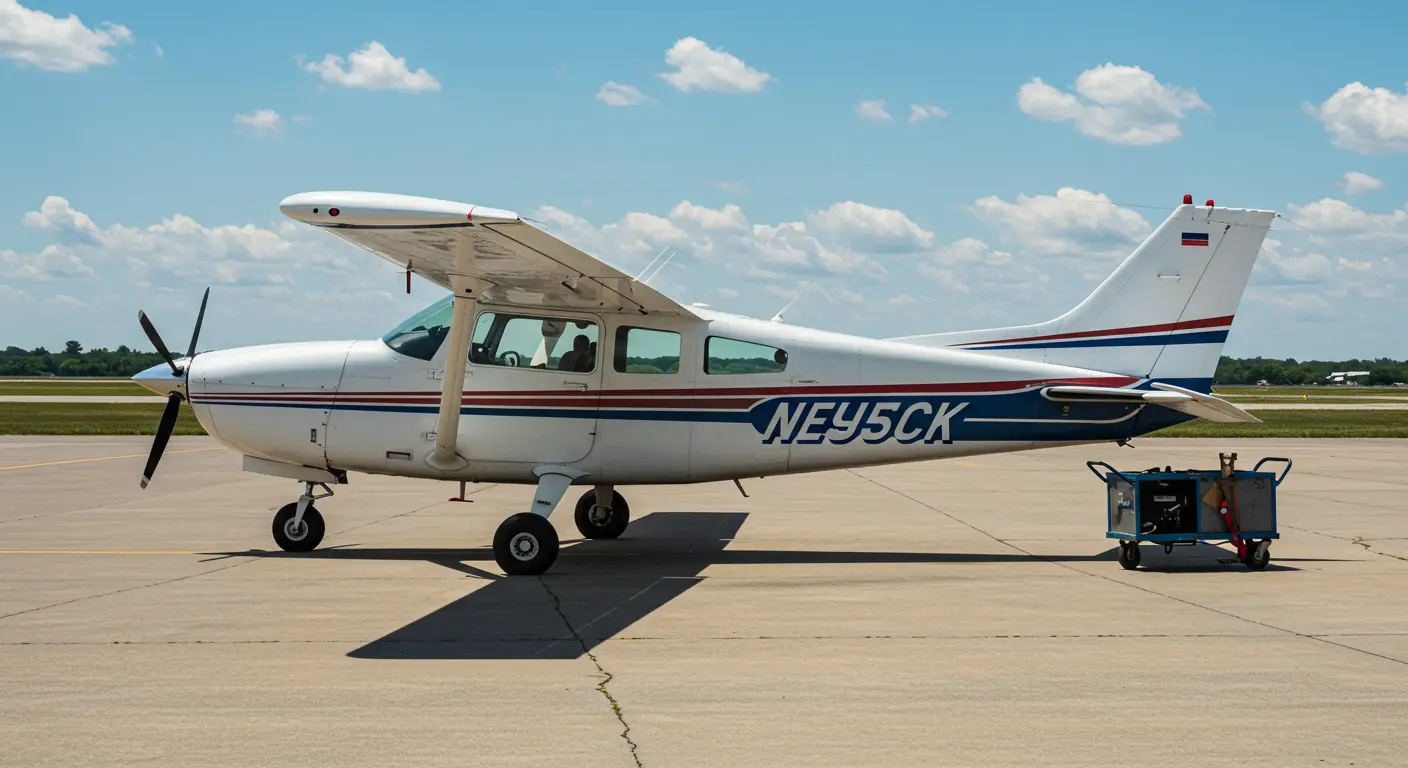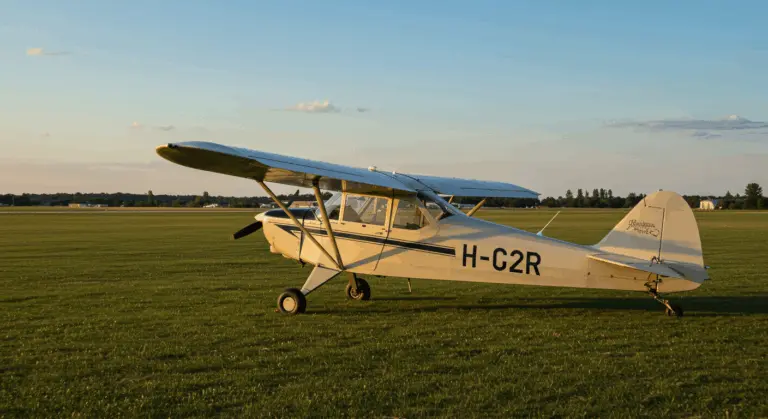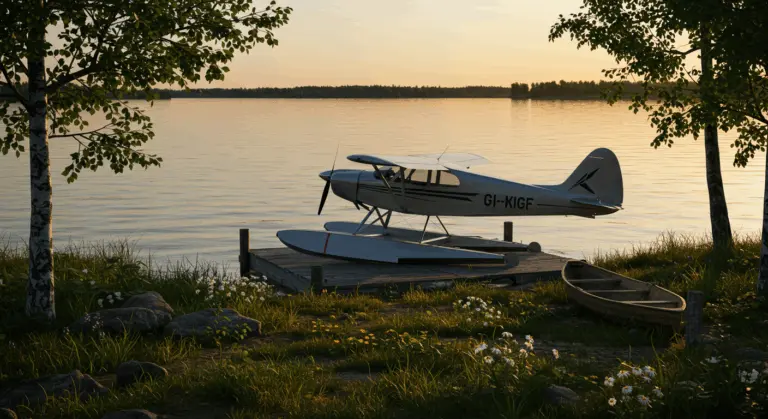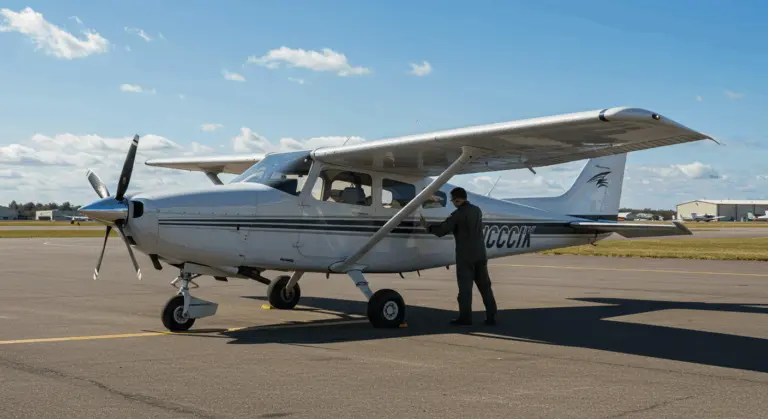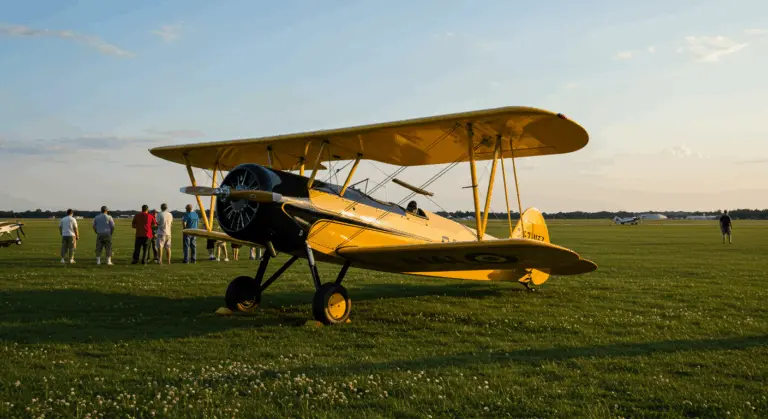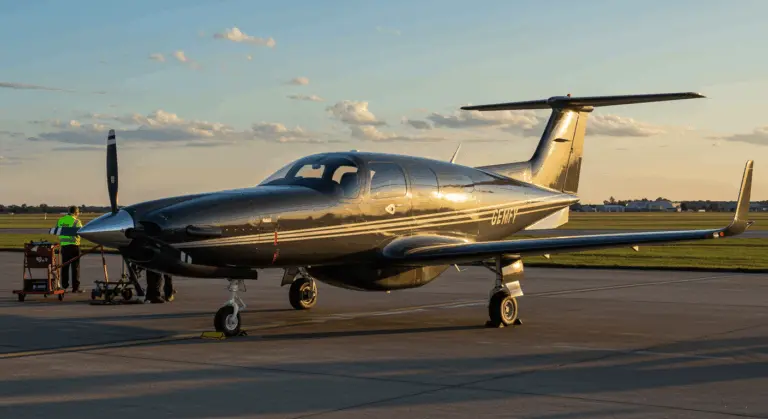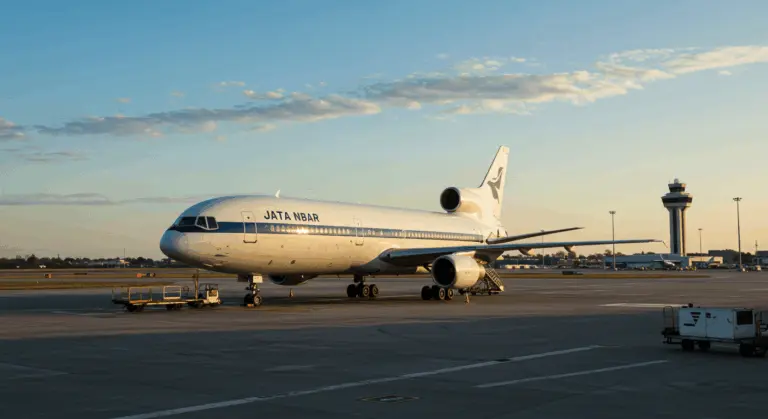Cessna 210 Centurion – Specifications, History, and More
Overview of the Cessna 210 Centurion
The Cessna 210 Centurion stands as one of general aviation’s most revered high-performance single-engine aircraft. This six-seat, high-wing marvel with retractable landing gear took its maiden flight in January 1957 and flew until 1986, becoming a cornerstone of general aviation.
What sets apart the Centurion is its extraordinary adaptability, with excellent load-hauling capabilities, substantial full-fuel payload, and flexibility in accommodating both passengers and cargo. Pilots cherish its reliable, stable handling—delivering predictable flight behavior when conditions turn demanding. The Centurion has proven itself capable in adverse weather, including light to moderate turbulence and icing conditions—reflecting its solid engineering and engineering.
Early Cessna 210 models featured four seats and drew power from a Continental IO-470 engine producing 260 horsepower. These early models featured a swept tail design and freshly engineered wings. Later versions evolved: later variants used the more powerful Continental IO-520-L engine rated at 285–300 horsepower, fuel capacity of 65 gallons (expandable to 90 gallons with long-range tanks), and a maximum cruising speed of 174 UCAS.
Specifications of the Cessna 210
The Cessna 210 Centurion’s specifications evolved significantly throughout its production run, with each iteration bringing improvements to performance, comfort, and capability. The aircraft quickly established its reputation.
The Cessna 210 operates with a maximum altitude of 17,300 feet and achieves a normal cruise speed of 170 knots (196 mph). With a full passenger load, its range extends approximately 440 nautical miles (506 statute miles). The 210N model, one of the later variants, requires a balanced field length of 2,106 feet for takeoff and 1,966 feet for landing, making it accessible to a wide range of airports.
The Centurion holds several notable distinctions, being the first single-engine aircraft certified in 1959 with:
-
Factory-installed deicing equipment.
-
Approval for flight in known icing conditions.
-
Factory-installed weather radar.
Performance Metrics
The Cessna 210 Centurion offers performance that explains its lasting appeal. Naturally aspirated models achieve a maximum speed of 174 knots. Turbocharged variants? They soar to 204 knots—positioning it among the swiftest single-engine piston aircraft of its era. Cruise speeds typically range from 130 and 170 knots, varying with configuration, engine model, and altitude.
Service ceiling varies by model: standard models reach 17,300 feet, while turbocharged versions ascend to an impressive 27,000 feet. This elevated ceiling allows turbocharged models to climb above most weather systems and take advantage of high-altitude winds. The aircraft shows strong climb performance with rates typically spanning 950 to 1,300 feet per minute, influenced by loading and atmospheric conditions.
The Centurion’s utility is further enhanced by its payload capabilities. With full fuel, the aircraft can still carry approximately 870 pounds of passengers and cargo—a significant advantage over many competitors. With optional long-range tanks, range is also impressive—spanning 760 to 900 nautical miles depending on power settings and reserves. This combination of speed, range, and payload makes the Cessna 210 an exceptionally versatile aircraft suitable for both personal transportation and business operations.
This performance established the Centurion as a premium single-engine choice. It remains popular today.
History and Development of the Cessna 210
The Cessna 210 development began in the late 1950s, with inaugural models debuting for the 1960 model year. These earliest Centurions were essentially modified Cessna 182 airframes—equipped with retractable landing gear and powered by fuel-injected Continental 470 engines producing 260 horsepower. The initial design featured a complex hydraulic gear system that would become one of the aircraft’s defining characteristics throughout its production journey.
Cessna steadily improved the 210 with several key upgrades:
-
1962: The cabin was widened, and more windows were added for improved comfort and visibility.
-
1964: The original engine was replaced with a more powerful 285-horsepower IO-520, improving the aircraft’s performance envelope.
-
1966: A turbocharged version was introduced, expanding high-altitude operational capabilities.
-
1967: The wing design was changed to a cantilever configuration, eliminating the struts for a cleaner, more aerodynamic profile.
-
1968: The cabin was revamped to make the Centurion a true six-place aircraft, establishing its role as a versatile family and business plane.
Variants of the Cessna 210
Over its nearly three-decade production run, the Centurion evolved into numerous variants across four distinct airframe configurations to suit different mission profiles.
The Centurion was offered in three primary configurations:
-
Normally Aspirated (210): The standard model.
-
Turbocharged (T210): Provided improved high-altitude performance, allowing flight above most weather.
-
Pressurized (P210): Offered greater passenger comfort during high-altitude flights by maintaining a lower cabin altitude.
Among Cessna’s single-engine aircraft, the 210 Centurion held the top spot alongside notable siblings like the 172 Sky hawk, 182 Skyline, and 206 Stationary. Yet the Centurion distinguished itself through retractable landing gear and superior performance. It competed in a market segment populated by other high-performance singles such as the Piper Malibu and Mirage, while simultaneously serving as a stepping stone for pilots eyeing twin-engine aircraft or turboprops like the Cessna Caravan, TBM 700, or Pilatus PC XII.
Each successive variant of the 210 introduced refinements and improvements, from early models with strut-braced wings to later versions with cantilever wings and more powerful engines. Special variants like those used by the Royal Thai Armed Forces (designated B. PhTh.1) demonstrate the platform’s adaptability to specialized missions. These ongoing improvements and various options kept the Centurion competitive as a versatile, high-performance single-engine aircraft throughout its production run.
Maintenance and Common Issues
Maintaining a Cessna 210 Centurion requires attention to several critical systems, with the fuel system and landing gear being the most important concerns for owners. These complex systems demand regular inspection and maintenance to ensure continued safe operation. The retractable landing gear, in particular, utilizes a hydraulic power pack that typically requires overhaul every eight years, though this interval may vary depending on usage patterns and operating conditions.
The Centurion’s fuel system needs careful attention. Checking lines, pumps, and tanks regularly is important to prevent fuel delivery problems that could compromise engine performance.
Engine care is another key aspect of Centurion maintenance. During cold weather operations, preheating the engine is strongly recommended to ensure reliable starts and minimize wear on engine components. The Continental engines powering the 210 series perform optimally when properly warmed before operation—basic care that significantly increases engine life and enhance reliability.
Prospective buyers of used Cessna 210s should pay particular attention to maintenance records, especially regarding the landing gear system, fuel system, and engine overhauls. A well-maintained Centurion can provide many years of reliable service, but neglected aircraft may require significant investment to restore. Working with mechanics experienced with the Cessna 210 is advisable, as they will be familiar with the model’s specific maintenance requirements and common issues that may not be apparent to those unfamiliar with the aircraft.
Cessna 210 Availability and Market
Though production ceased in 1986, the used Cessna 210 market thrives. Prices range widely from approximately $79,000 for early models to over $279,900 for late-model variants with modern avionics.
Model variation dramatically influences pricing in the Centurion marketplace. Turbocharged T210R models, particularly those from the mid-1980s near production’s end, command premium prices reaching $675,000 for exceptional examples. Mid-production variants such as the 210G, 210H, and 210J Centurions (including turbocharged versions) typically occupy the middle price range, often listed between $190,000 and $300,000 depending on condition and equipment.
The earliest 1960 model year Centurions—historically significant as the line’s pioneers—generally offer the most affordable entry into 210 ownership, with examples available around $99,400. These aircraft offer the classic Centurion experience but typically lack the refinements and performance capabilities of later models.
Beyond the purchase price, prospective owners must consider significant operating costs, including:
-
Fuel: Consumption is typically 14–18 gallons per hour.
-
Insurance: Premiums reflect the aircraft’s complexity and value.
-
Maintenance: Expenses can be high, especially for the retractable gear system.
-
Hangar Fees.
Total ownership costs require careful pre-purchase inspection.
Despite these considerations, the Centurion’s combination of performance, payload, and range continues to attract buyers looking for a capable single-engine aircraft that can serve both personal and business transportation needs, ensuring that well-maintained examples remain in demand in the used aircraft market.
Conclusion: The Cessna 210 Centurion Today
Decades beyond its production finale, the Cessna 210 Centurion remains important in general aviation. It stays relevant because of its exceptional load-hauling ability, flexible cabin, and reliable all-weather performance.
The Centurion’s strong market position benefits from a dedicated owner community that shares knowledge, maintenance tips, and operational experience. This network of support helps sustain the fleet and provides valuable resources for new owners. The continued demand for well-maintained examples demonstrates that the aircraft’s fundamental design remains relevant even as newer models have entered the market.
The Cessna 210’s unique combination of speed, range, and utility sets it apart from other aircraft. Few contemporary single-engine aircraft can match the Centurion’s combination of six-seat capacity, substantial payload, and high-performance capabilities in a package that remains accessible to private pilots. This versatility makes it equally suitable for family vacations, business travel, or specialized operations like aerial photography or light cargo transport.
The Cessna 210 Centurion’s legacy in general aviation is secure—a benchmark for high-performance single-engine aircraft. For pilots seeking a proven platform capable of handling diverse missions, the Centurion remains a compelling choice that effectively combines acquisition cost with performance. As these aircraft continue soaring into their seventh decade of service, they demonstrate Cessna’s enduring design excellence and the timeless allure of versatile, capable aviation.

